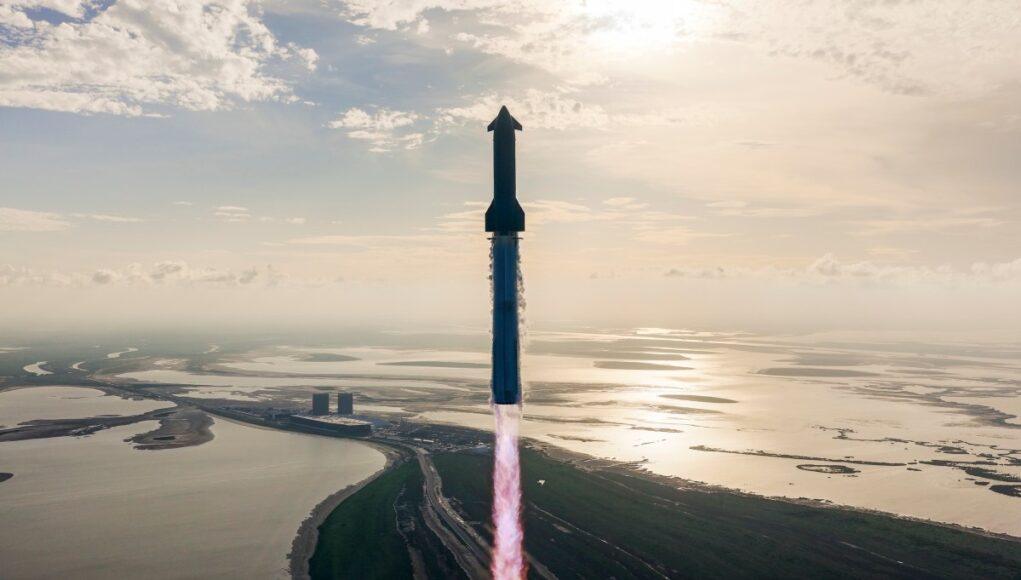SpaceX has long marketed Starship as a fully and rapidly reusable rocket that’s designed to deliver thousands of pounds of cargo to Mars and make life multiplanetary. But reusability at scale means a space vehicle that can tolerate mishaps and faults, so that a single failure doesn’t spell a mission-ending catastrophe.
The 10th test flight on Tuesday evening demonstrated SpaceX’s focus on fault tolerance. In a post-flight update, SpaceX said the test stressed “the limits of vehicle capabilities.” Understanding these edges will be critical for the company’s plans to eventually use Starship to launch Starlink satellites, commercial payloads, and eventually astronauts.
When the massive Starship rocket lifted off on its 10th test flight Tuesday evening, SpaceX did more than achieve new milestones. It purposefully introduced several faults to test the heat shield, propulsion redundancy, and the relighting of its Raptor engine.
The heat shield is among the toughest engineering challenges facing SpaceX. As Elon Musk acknowledged on X in May 2024, a reusable orbital return heat shield is the “biggest remaining problem” to 100% rocket reusability.
The belly of the upper stage, also called Starship, is covered in thousands of hexagonal ceramic and metallic tiles, which makes up the heat shield.
Flight 10 was all about learning how much damage the Ship can accept and survive when it goes through atmospheric heating. During the tenth test, engineers intentionally removed tiles from some sections of the ship, and experimented with a new type of actively cooled tile, to gather real-world data and refine designs.
The Space Shuttle Columbia provided an unwelcome lesson on thermal shield vulnerability in 2003. A piece of insulating foam struck the thermal tiles on the left wing of Columbia, a critical error during liftoff that ended up killing all seven astronauts onboard upon reentry.
Techcrunch event
San Francisco
|
October 27-29, 2025
Twenty-two years on, SpaceX is focused on mapping performance even in worst-case scenarios. If post-flight data shows the Ship stayed within anticipated temperature margins, it pushes the company forward towards the eventual goal of landing the stage upright to be refurbished and reused.
Propulsion redundancy was also put to the test. The Super Heavy booster’s landing burn configuration appeared to be a rehearsal for engine failure. Engineers intentionally disabled one of the three center Raptor engines during the final phase of the burn and used a backup engine in its place. That was a successful rehearsal for an engine-out event.
Finally, SpaceX reported the in-space relight of a Raptor engine, described on the launch broadcast as the second time SpaceX has pulled this off. Reliable engine restarts will be necessary for deep-space missions, propellant transfers, and possibly some payload deployment missions.
NASA’s Artemis program hinges on SpaceX developing a heat shield that survives reentry, and a ship that can reliably relight on orbit, in order to deliver astronauts safely to the lunar surface. The company has awarded SpaceX just over $4 billion for a version of Starship that can land on the Moon; the first Starship lunar landing is currently scheduled for mid-2027.
NASA calibrates risks differently according to the mission profile, accepting a higher degree of risk on uncrewed service missions and a very low risk for crewed transport. The agency sets quantitative safety targets that must be demonstrated via testing and flight data before it will put astronauts on a new rocket. Those levels don’t change for Starship just because it is a larger rocket, but it does mean more potential failure modes.
Viewed together, these experiments indicate that SpaceX is testing with these standards in mind. The company will introduce many more changes with the next version of Starship, called Block 3, including a higher-thrust Raptor engine, upgrades to the flaps on Ship, and updates to avionics and guidance, navigation and control systems.
The next step is translating Flight 10 data into future hardware upgrades to move closer to routine operations and days when, as Musk envisioned, “Starship launches more than 24 times in 24 hours.”






